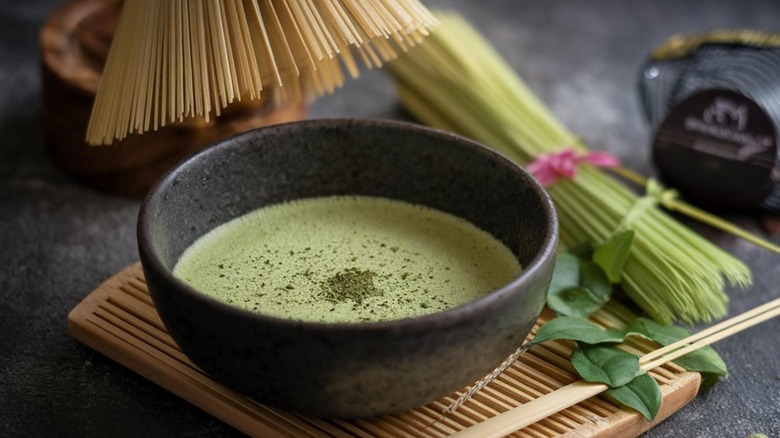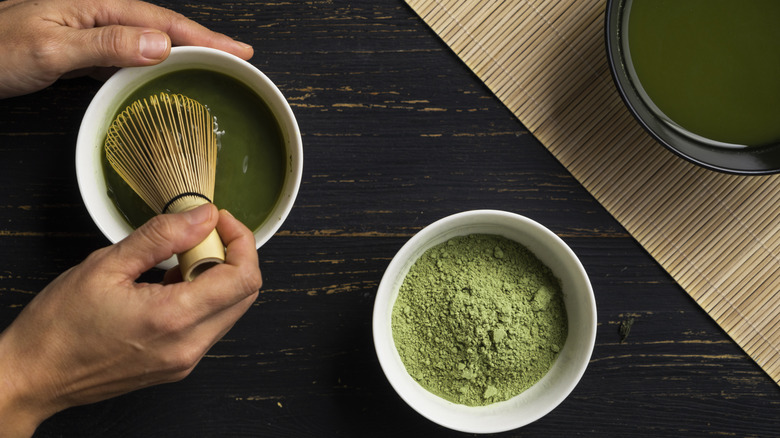The Best Ratio To Use When Making Your Own Matcha
Matcha, an ultra-fine powder made from dried green tea leaves, was once reserved for emperors, but in recent years, it's gone mainstream. Today, you can find matcha concoctions in more than just tea houses. Matcha lattes, cocktails, and desserts have made their way to coffee shops, bars, bakeries, and restaurants around the world. But if you want to enjoy matcha the way it was meant to be served, all you need is a little hot water.
Jee Choe, coffee and tea sommelier, and blogger at Oh, How Civilized, says you probably need less water than you think in your homemade matcha. "For each teaspoon of matcha, use 2 ounces (¼ cup) of water to get a good balance of water to matcha," she advises. While this may not seem like much compared to the matcha lattes you may have sipped in your neighborhood café, Choe suggests that matcha beverages should really be smaller and more concentrated. "Traditional matcha is to be finished in three sips so you don't need a lot of water to make matcha properly," she explains.
For best results, stick to traditional tools
A traditional bamboo whisk, known as a chasen, is the best tool to get a perfect suspension of matcha in water, and the easiest way to achieve that satisfying layer of foam on top. If you don't have a chasen, you can use your handy milk frother to make matcha, which comes close to replicating the very specific whisking action of the more traditional tool. A standard wire whisk or even a fork will work in a pinch, but they're much more likely to leave lumps behind, so if you plan to make matcha part of your morning routine, it's definitely worth investing in the real deal.
Once you've mixed your matcha, you can sip it as-is, which is traditional, or add it to other beverages for a refreshing, colorful boost. For iced matcha, mix your hot matcha into ½ to 1 cup of cold water or milk, stir, and pour over ice, or make a vegan matcha latte with hot, frothed coconut milk and add a dollop of freshly whipped coconut cream on top.

